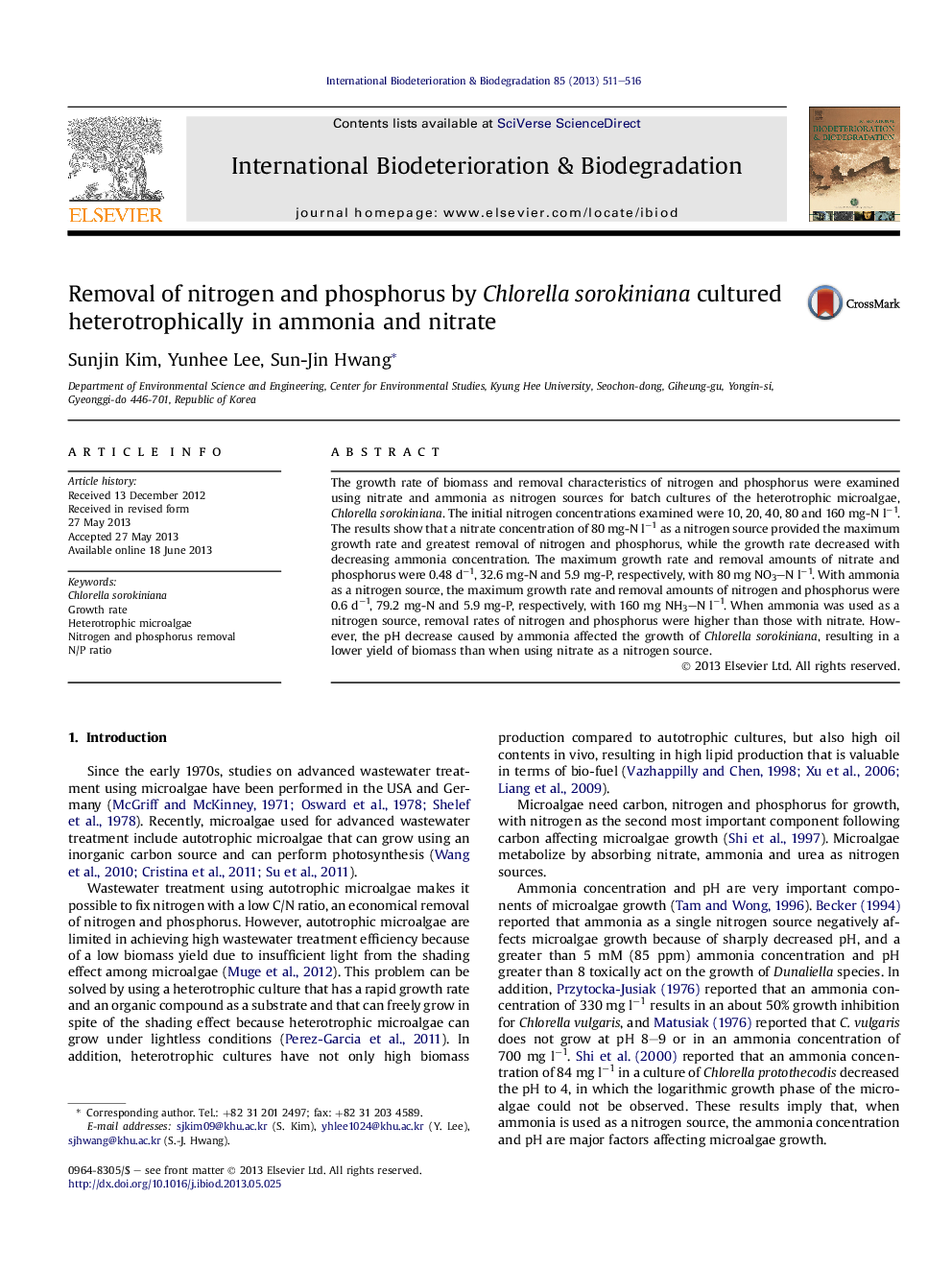| Article ID | Journal | Published Year | Pages | File Type |
|---|---|---|---|---|
| 6289357 | International Biodeterioration & Biodegradation | 2013 | 6 Pages |
Abstract
The growth rate of biomass and removal characteristics of nitrogen and phosphorus were examined using nitrate and ammonia as nitrogen sources for batch cultures of the heterotrophic microalgae, Chlorella sorokiniana. The initial nitrogen concentrations examined were 10, 20, 40, 80 and 160Â mg-NÂ lâ1. The results show that a nitrate concentration of 80Â mg-NÂ lâ1 as a nitrogen source provided the maximum growth rate and greatest removal of nitrogen and phosphorus, while the growth rate decreased with decreasing ammonia concentration. The maximum growth rate and removal amounts of nitrate and phosphorus were 0.48Â dâ1, 32.6Â mg-N and 5.9Â mg-P, respectively, with 80Â mg NO3-NÂ lâ1. With ammonia as a nitrogen source, the maximum growth rate and removal amounts of nitrogen and phosphorus were 0.6Â dâ1, 79.2Â mg-N and 5.9Â mg-P, respectively, with 160Â mg NH3-NÂ lâ1. When ammonia was used as a nitrogen source, removal rates of nitrogen and phosphorus were higher than those with nitrate. However, the pH decrease caused by ammonia affected the growth of Chlorella sorokiniana, resulting in a lower yield of biomass than when using nitrate as a nitrogen source.
Keywords
Related Topics
Life Sciences
Environmental Science
Environmental Science (General)
Authors
Sunjin Kim, Yunhee Lee, Sun-Jin Hwang,
